History
The Gorilla Doctors began as the realization of a dream of American gorilla researcher Dian Fossey. Fossey dedicated her life to studying and protecting mountain gorillas in Rwanda’s Volcanoes National Park.
Meet the current roster of Gorilla Doctors and other staff members.
Gorilla Doctors Timeline
Mid-1980s: By the mid-1980s, Dr. Fossey’s research indicated that the mountain gorilla population was rapidly declining, with fewer than 300 known mountain gorillas remaining in the world. Gorillas were being killed outright by poachers, suffering from life-threatening injuries caused by snares, and succumbing to illnesses Fossey suspected were being transmitted by humans. At that time, there was no health program in place to treat sick and injured gorillas.
1984: In 1984, Fossey met wildlife enthusiast Ruth Morris Keesling, whose father was Dr. Mark Morris, founder of the Morris Animal Foundation (MAF), an organization that funds animal health research around the world. “There are 248 gorillas in the world, and they’re all going to die,” Fossey told Keesling. “Would you help me save them by sending a veterinarian for them?”
1985: Keesling promised to help Fossey by establishing the Volcanoes Veterinary Clinic in Rwanda through MAF. She hired Dr. James Foster to be the resident veterinarian—the first Gorilla Doctor.
1986: Sadly, on December 26, 1985, a few weeks before Dr. Foster was scheduled to arrive in Rwanda, unknown assailants murdered Fossey in her cabin. Fortunately, MAF vowed to honor Fossey’s wishes, and in early 1986, Dr. Foster set about building the clinic.
1994: Thanks to Dr. Foster’s leadership, the project built a veterinary program that would ultimately help turn around the decline of the mountain gorilla species. During the 1994 Rwanda genocide and the years of armed conflict that followed, Dr. Foster tirelessly advocated for the protection of the mountain gorillas caught in the crossfire.
1997: Dr. Foster served as program director of what would become the Mountain Gorilla Veterinary Project (MGVP) until his death in Rwanda in 1997. Following Dr. Foster’s death, Dr. Mike Cranfield became executive director of the MGVP. Under Dr. Cranfield, the program expanded to include health programs for the mountain and Grauer’s gorillas living in Uganda and the Democratic Republic of Congo, orphaned gorillas, and for the people working in and living near gorilla habitat.
2006: In 2006, the Mountain Gorilla Veterinary Project became its own 501(c)3 organization, separate from MAF. Three years later, MGVP partnered with the Karen C. Drayer Wildlife Health Center at the University of California, Davis, School of Veterinary Medicine. Together, the two institutions formed Gorilla Doctors, which is now under the co-directorship of Cranfield and Dr. Kirsten Gilardi at UC Davis.
2014: Gorilla Doctors now employs more than a dozen veterinarians and health experts in all three countries where mountain gorillas live.
Past Gorilla Doctors
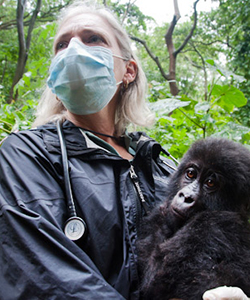
Dr. Ramer served as the regional veterinary manger from 2013 – 2015 and 2009 – 2011. She led dozens of health interventions, oversaw the treatment of 8 new gorilla orphans, and helped facilitate the move of 9 gorilla orphans from Rwanda to DRC. Dr. Ramer returned to the US in January 2015 and now serves as the Director of Conservation Medicine at the Wilds in Ohio.
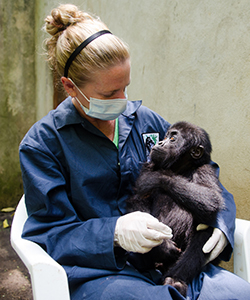
Dr. Zimmerman managed Gorilla Doctors’ Africa programs from our regional base in Musanze, Rwanda from November 2011 to December 2013. During her tenure, she lead countless medical interventions and supervised the medical care of 3 rescued orphans: Grauer’s gorillas Baraka and Isangi, and mountain gorilla Matabishi.
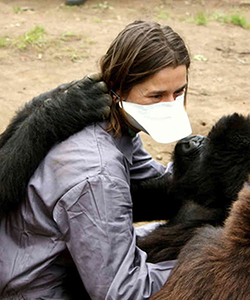
Dr. Braum volunteered for Gorilla Doctors in 2002 and returned from 2008 to 2011 as regional field veterinarian. She performed interventions on sick and injured gorillas in Rwanda, Uganda, and DRC, helped care for orphan gorillas, and also helped support Gorilla Doctors’ domestic animal health work.
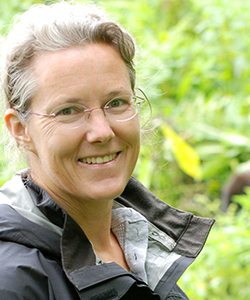
Dr. Spelman worked for Gorilla Doctors from 2006 to 2009 as regional veterinary manager. She expanded the Gorilla Doctors team, established in-country administrative procedures, and collected important data on respiratory disease outbreaks in mountain gorillas. She is now writing, teaching biology, and working part-time as a clinical veterinarian.
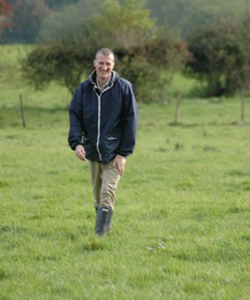
From 2006 to 2007, Dr. Gardner worked as Gorilla Doctors’ regional field veterinarian, responding to emergency cases in all three countries, training other staff members, and organizing the Gorilla Conservation Employee Health Program. Now based in based in South Lanarkshire in Scotland, Dr. David works as a partner at the ARMAC Veterinary Group.
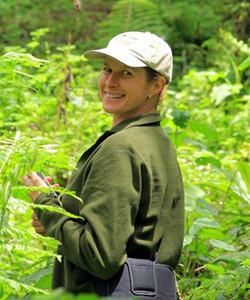
From 2002 to 2006 Dr. Nutter served as a regional field veterinarian responsible the project’s regional management. She oversaw the domestic animal health and research programs, co-founded the orphan care program with Dr. Whittier, and helped start the employee health program. Currently, she is the Senior Technical Officer for the USAID RESPOND Project and a research professor at Tuft’s Veterinary School.
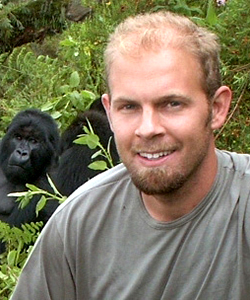
Dr. Whittier worked with Gorilla Doctors from 2001 to 2006, becoming regional field veterinarian in 2003. Dr. Whittier, along with his wife, Dr. Nutter, greatly expanded the program, notably hiring four new African veterinarians, guiding Gorilla Doctors’s gorilla orphan care program, and establishing a health program for Grauer’s gorillas. He’s now a Veterinary Medical Officer and PREDICT Global Coordinator for the Smithsonian Institution.
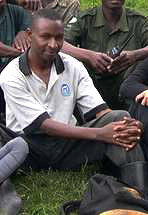
Dr. Rwego worked as a regional field veterinarian between 2001 and 2005. Now based in Kampala, Uganda, he works as a technical advisor for the East Congo Basin USAID RESPOND project and is a lecturer in the Department of Biological Sciences, Makerere University and an adjunct at School of Public Health and College of Veterinary Medicine, University of Minnesota.
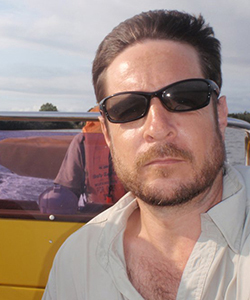
Dr. Cameron worked as field director from 1997 to 1999, providing urgent health care and conducting important gorilla health research. He returned to Rwanda from 2005 to 2007 as part-time field veterinarian.
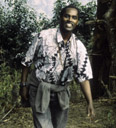
Dr. Mudakikwa served Gorilla Doctors as regional field veterinarian from 1995 to 2003. Gorilla Doctors continues to work closely with Dr. Mudakikwa, who is now head veterinarian for the Rwanda Development Board, which manages Rwanda’s national parks and wildlife. He is also a Gorilla Doctors Science Advisor.
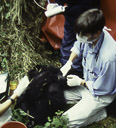
Dr. Sleeman worked for Gorilla Doctors from 1995 to 1998, first as field director and then as interim project director after Dr. Foster passed away. Dr. Sleeman now directs the National Wildlife Health Center of the U.S. Geological Survey and teaches at the veterinary colleges of the University of Tennessee, and Virginia Polytechnic University.
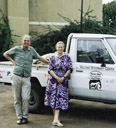
From 1993 to 1995, Dr. Cooper served as director of the VVC while Mrs. Cooper oversaw the project’s accounts and management. The 1994 genocide forced the couple to flee, but they returned two months later. Now based in the UK, Dr. Cooper works as a veterinary pathologist while Mrs. Cooper specializes in animal and conservation law. They continue their work with wildlife, domesticated animals and rural communities in East Africa.
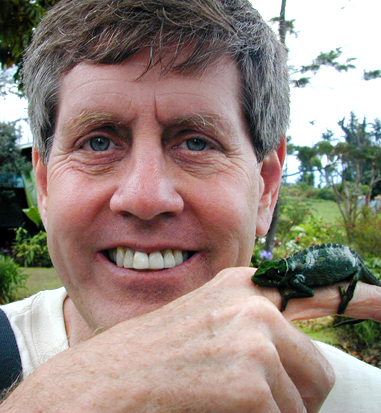
From 1992 to 2004, Dr. Hilsenroth was executive director of the Morris Animal Foundation, Gorilla Doctors’ founding organization, and still serves on the Gorilla Doctors board today. Dr. Hilsenroth helped manage the organization in the U.S. and oversaw MGVP’s budgeting and fundraising. Today, he is the Executive Director of the American Association of Zoo Veterinarians.
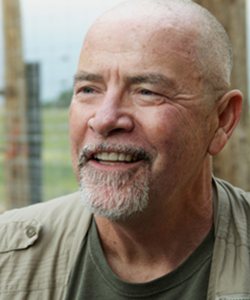
Dr. Richardson worked as a project veterinarian for seven months in 1992 and 1993 until he was evacuated due to the turmoil that preceded the 1994 genocide. Despite being in the region during a very dangerous time, he was able to perform several interventions to treat injured mountain gorillas. He currently works as a captive wild animal veterinary consultant.
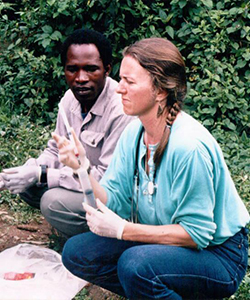
Dr. Macfie served as director of the VVC in Rwanda from 1989 to 1992. In May 2011 she joined the Wildlife Conservation Society’s Species Program in Nairobi, Kenya, working as their Gorilla Coordinator.
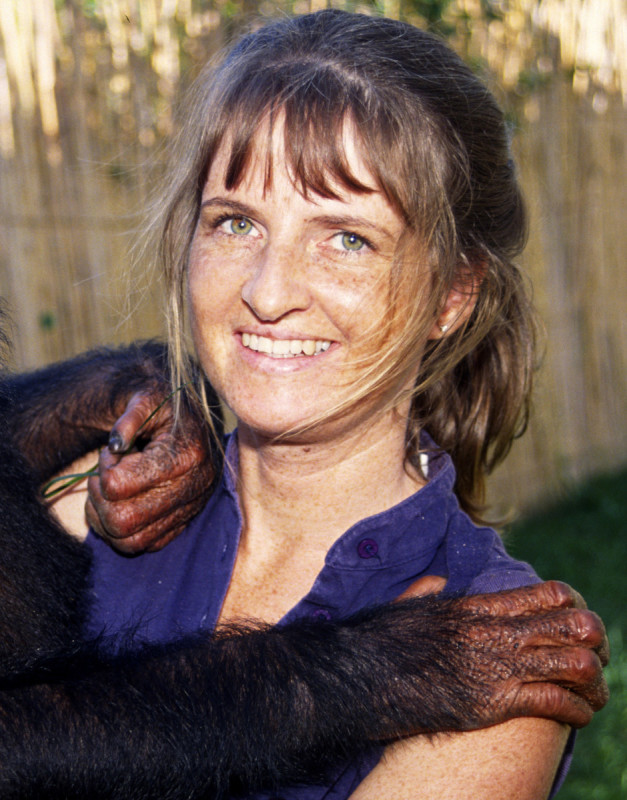
Dr. Suzanne worked as director of the VVC from 1988 to 1989. In addition to performing gorilla health monitoring and interventions, Dr. Anderson worked with the Volcanoes National Park staff to develop preventative health measures for personnel and tourists. She now lives in Christchurch, New Zealand, and works in companion animal medicine and veterinary acupuncture.
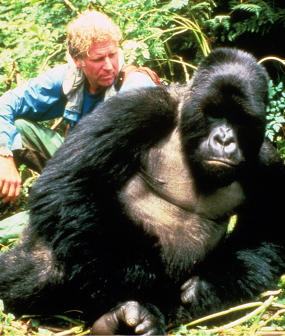
Dr. Foster was the first Gorilla Doctor, serving as program director from 1986 until his death in Rwanda in 1997. He spent two years in Kinigi, Rwanda, building the Virunga Veterinary Clinic (VVC), and then returned to the U.S. where he divided his time between working in Rwanda and administering the project from his home in Washington state. Thanks to Dr. Foster’s leadership and advocacy, the project survived Rwanda’s conflict years during the 1990s.
Other Veterinarians
- Barkley Hastings 1988
- Ute Eilenberger 2000
- Jo Ann Garbe 2001


 Donate
Donate